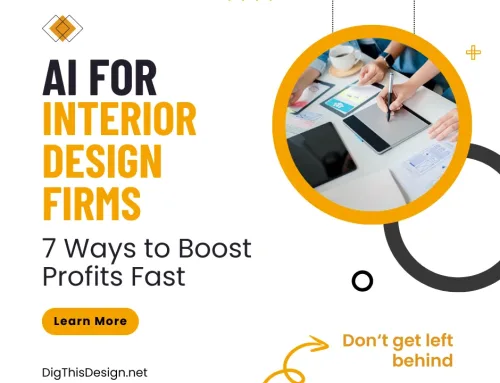Project management is an indispensable facet of achieving organizational success in the modern, fast-paced business landscape. With the growing complexity of projects and increasingly demanding deadlines, project managers find themselves in constant pursuit of innovative solutions to streamline their workflow and elevate efficiency.
To that end, time-tracking software has emerged as an essential tool, offering significant contributions to effective project management. This technology goes beyond mere monitoring; statistics show that when employees know they are being monitored, they are 7% more productive, which can lead to increased profits.
It merges real-time monitoring, integration with other platforms, customizable reporting, and mobile accessibility to create a comprehensive system that truly aligns with the demands of today’s project management needs.
In this article, we will delve into the various facets of time-tracking software, providing a detailed exploration of its features, benefits, best practices, and how it can be an essential part of a project manager’s toolkit.
Understanding Time-Tracking Software

Time-tracking software is a specialized tool that operates with the core functionality of monitoring and recording the time spent on various tasks within a project. A time-tracking software tool, such as Insightful, can become an indispensable instrument and function as a standalone application or be integrated into a broader project management system.
Its features play a critical role in enhancing the efficiency of project handling. For instance, real-time monitoring allows team members to log and track time as they work, painting an accurate picture of time allocation.
Going on, integrative capabilities extend its functionality by allowing many systems to sync with other essential tools like calendars, billing software, and comprehensive project management platforms. This connectivity ensures a seamless work process.
Customizable reports enable the generation of detailed insights tailored to the needs of various stakeholders, thereby enhancing the decision-making process.
Furthermore, mobile accessibility is often a part of modern solutions, providing the flexibility to track time from anywhere and maintain continuous oversight of ongoing tasks. The amalgamation of these features makes time-tracking software a pivotal asset in the contemporary project management landscape.
Benefits of Using Time-Tracking Software in Project Management
1. Improved Transparency and Accountability
Time tracking software provides a detailed log of hours spent on each task, allowing managers and team members to see where time is going. This enhanced visibility builds responsibility and trust within the team, as everyone can see what others are working on. Transparency in time management minimizes wasted effort by pinpointing where time may be slipping away. This leads to real-time adjustments, sparking motivation within team members and keeping them centered on the end goal, thereby playing a vital role in the success of the project.
2. Amplifying Productivity and Efficiency
In the modern business world, time-tracking software is the rhythm section, central to boosting productivity and efficiency. It uncovers hidden bottlenecks, allowing project managers to maneuver resources wisely and fine-tune their approach.
Through the integration of well-defined deadlines and an adaptable strategy, this approach ensures that projects not only maintain their schedule but also progress toward a cost-effective conclusion with efficiency.
3. Bridging Trust Through Client Billing and Enabling Strong Risk Management
Time-tracking software extends beyond its function as a simple digital chronometer; it metamorphoses into a vital link of trust and understanding between businesses and clients. With precision, it crafts records that evolve from mere numerical data into a woven fabric of trust and transparency, creating a connection that surpasses simple transactions.
However, the utility of time-tracking software is not limited to just maintaining records. By meticulously analyzing labor costs, it provides clear insights into potential future challenges and opportunities. This process not only refines cost estimates but also establishes a strong foundation for risk management. By transforming the ambiguous prospects of tomorrow into a clear and navigable path, it emphasizes its essential role in guiding organizations toward financial stability and growth.
4. Encouraging Collaboration and Team Alignment
Collaboration and team alignment are central to a project’s success. Integrated time-tracking tools provide real-time insights, fostering improved communication. This shared understanding ensures clear priorities and a sense of shared responsibility, streamlining the collaboration process.
Best Practices for Implementing Time-Tracking Software
Begin by carefully evaluating the various options for time-tracking software. Consider the distinct features, integration capabilities with existing systems, user-friendliness, and availability of support. This comprehensive assessment will help you select the solution that aligns best with your organization’s unique requirements.
To maximize the efficiency of the selected software, conduct thorough training sessions for all users. Provide hands-on tutorials, best practice guides, and access to support as needed. Simultaneously, craft a standardized time-tracking policy inclusive of clear and transparent guidelines. This ensures a unified approach and minimizes confusion or misuse.
Conclusion
By transforming opaque work hours into transparent insights, time-tracking software infuses the organizational culture with a new ethos of accountability. Its feature-rich environment, if harnessed with deliberate thought and precision, is a catalyst for streamlined operations, driving organizations not merely to meet deadlines but to thrive within them.
The path to project success is punctuated with strategy and innovation, and time-tracking software is the compass guiding the way. Its presence in the modern business toolkit is not merely beneficial; it’s fundamental, illuminating the path to success in a complex and ever-changing world.
Other posts you might enjoy:
Floor Plans 101: 6 Mistakes To Avoid On Your Project
How to Run a Small Construction Business Professionally: 7 Key Tips





